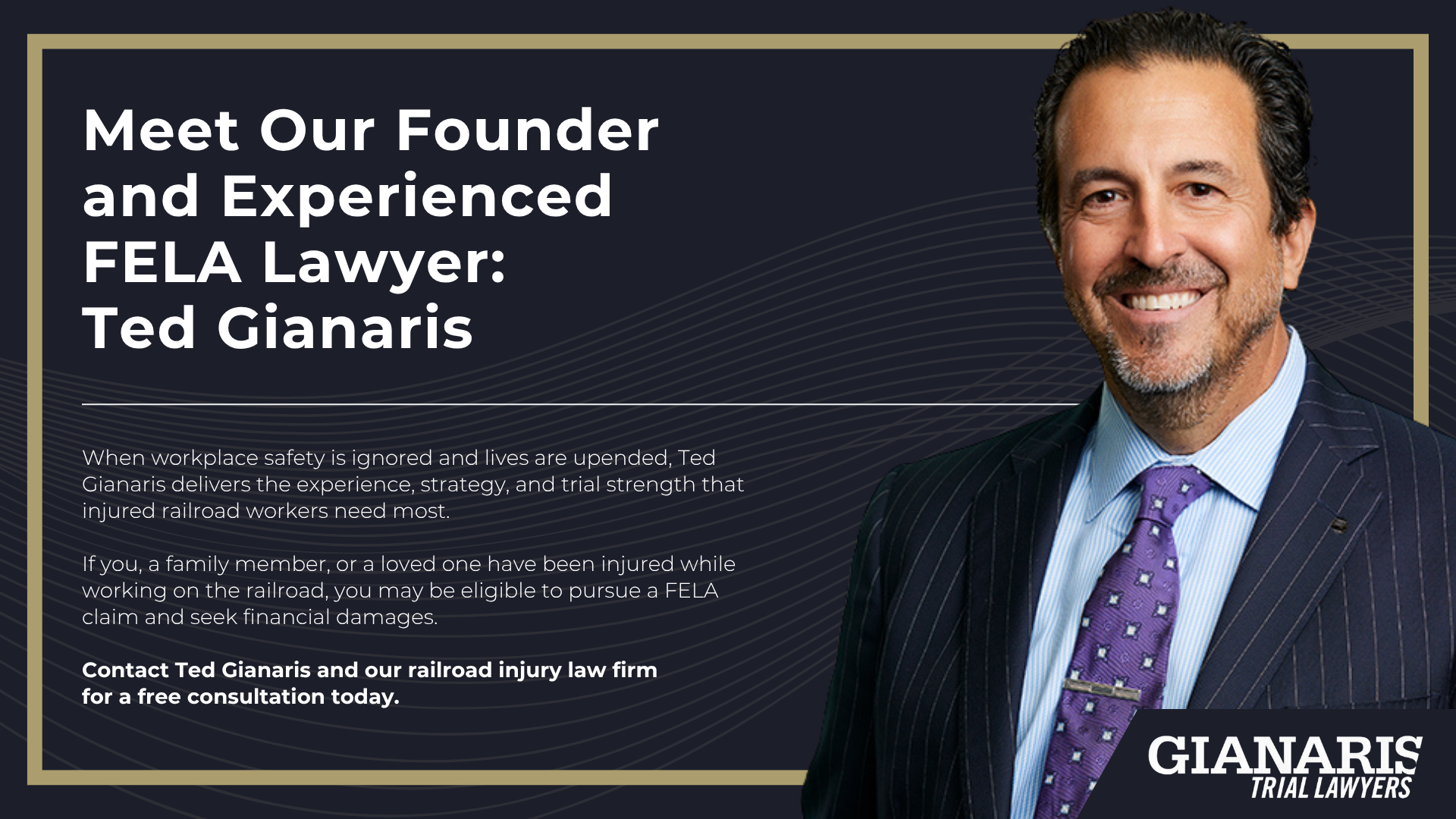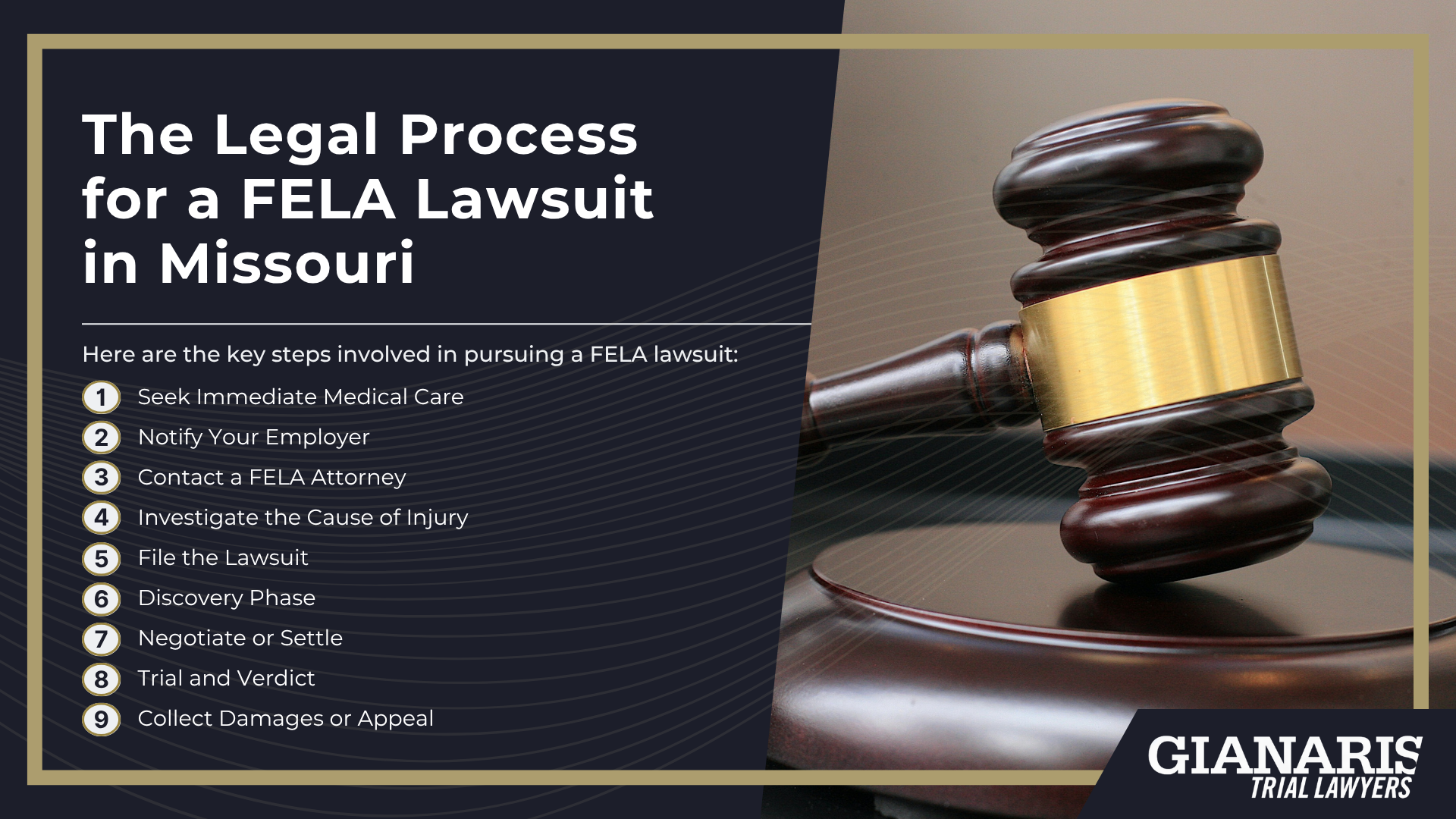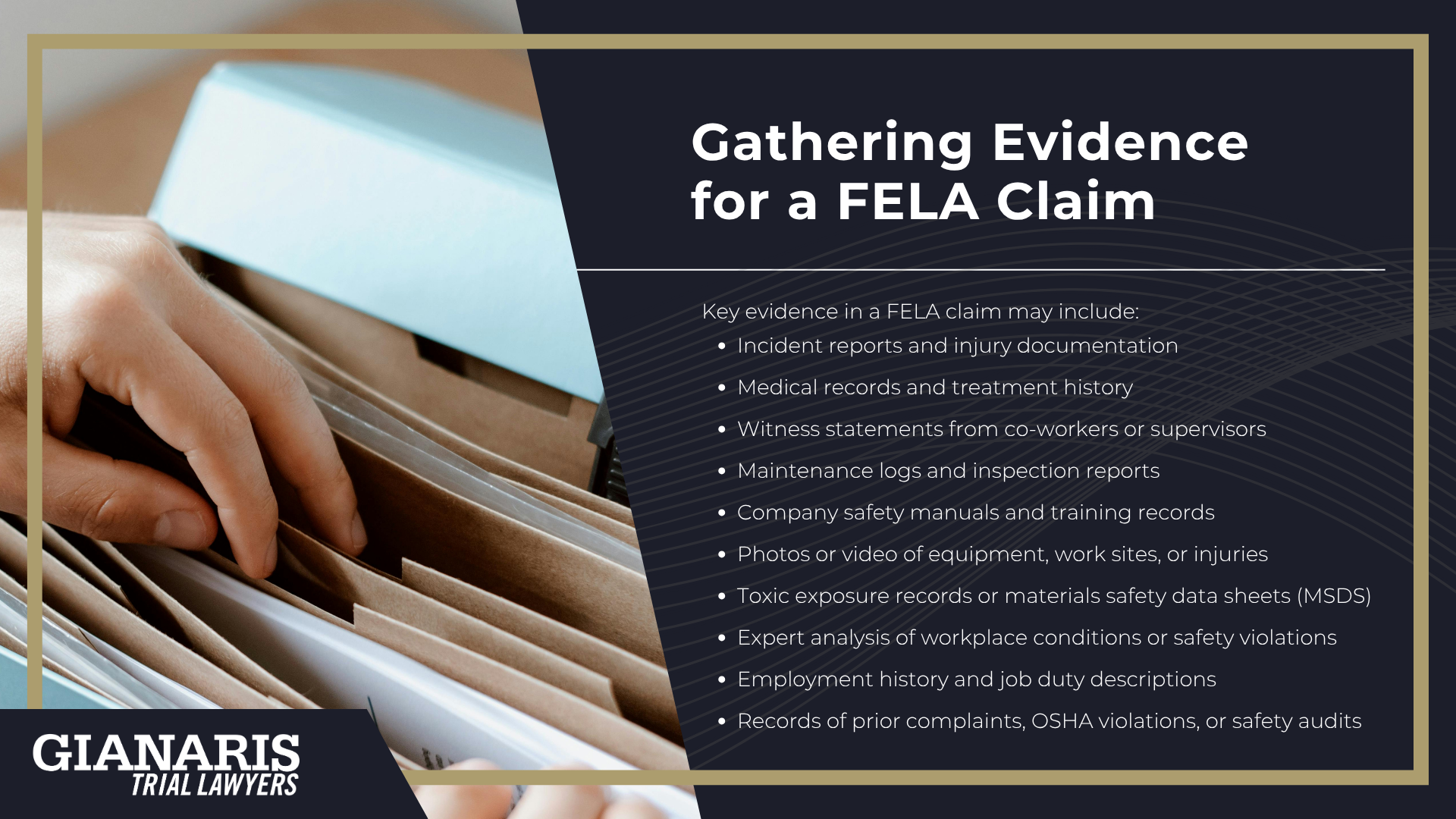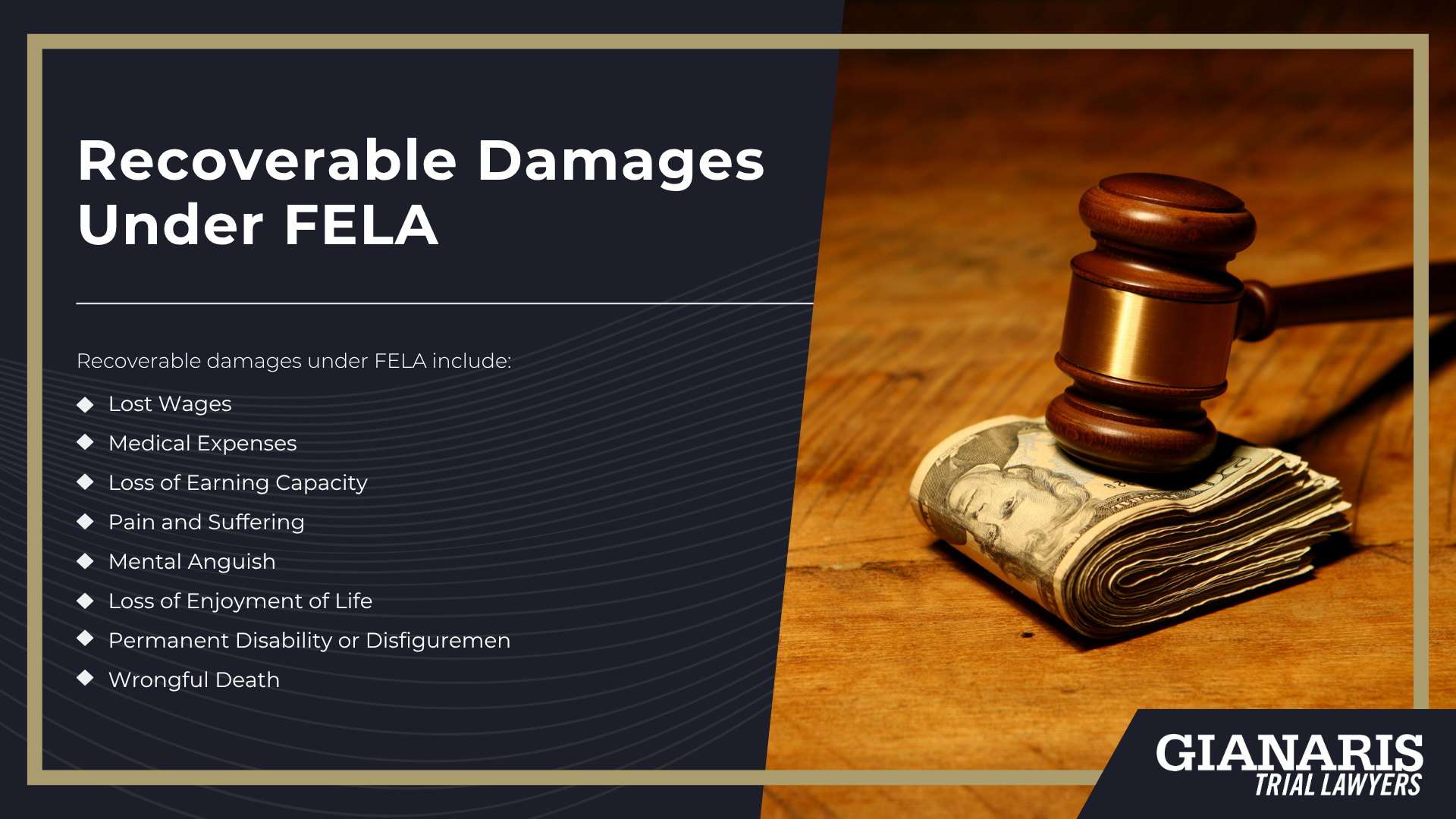The Federal Employers Liability Act (FELA) is a federal statute enacted in 1908 to protect railroad workers injured on the job due to employer negligence.
Unlike standard workers’ compensation systems, FELA requires proof that the railroad company was negligent or violated safety regulations, but it allows for greater compensation in return.
FELA is one of several key federal laws designed to protect workers in the railroad industry, working alongside the Federal Railroad Safety Act, the Locomotive Inspection Act, and the Safety Appliance Act to address various aspects of railroad safety.
Together, these laws create a legal framework that holds railroads accountable for unsafe working conditions and equipment failures.
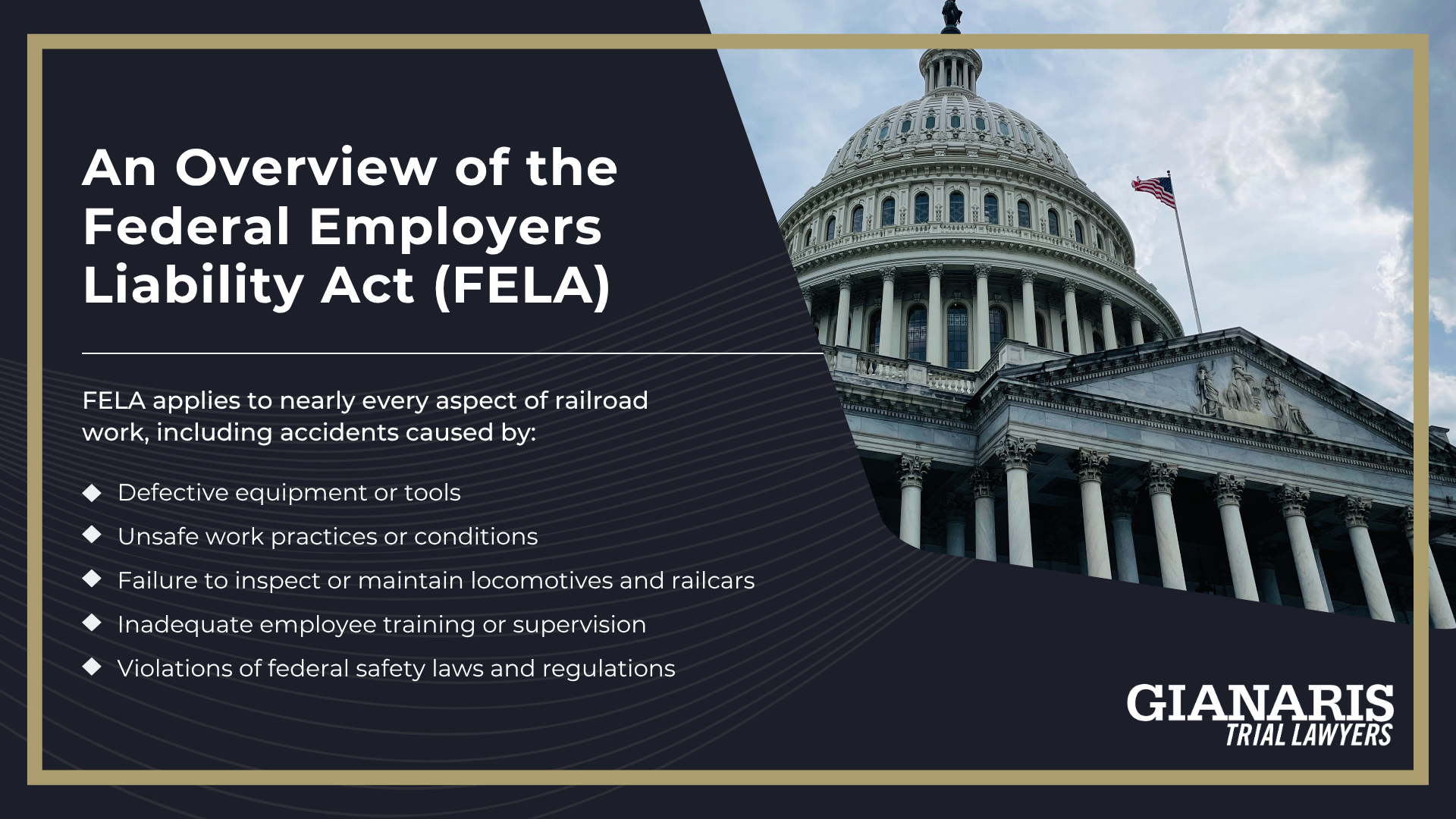
FELA applies to nearly every aspect of railroad work, including accidents caused by:
- Defective equipment or tools
- Unsafe work practices or conditions
- Failure to inspect or maintain locomotives and railcars
- Inadequate employee training or supervision
- Violations of federal safety laws and regulations
To bring a successful FELA claim, the injured worker must demonstrate that the railroad’s negligence played a role in causing the injury—even if it was only a partial cause.
The Locomotive Inspection Act and Safety Appliance Act can support a FELA case by establishing that equipment defects or rule violations occurred.
Because these claims are governed by federal laws, they can be filed in either state or federal court.
FELA covers a wide range of injuries, from traumatic accidents to occupational illnesses caused by long-term toxic exposure.
For railroad workers hurt on the job, FELA provides a powerful legal tool to recover compensation and hold negligent employers accountable.
Types of Injures Commonly Claimed Under FELA
The dynamic and physically demanding environment of railroad work—whether on running locomotives, in rail yards, or within maintenance shops—exposes workers to a wide range of serious injuries.
Each job function comes with distinct hazards: brakemen may suffer falls during coupling operations, while machinists and electricians face risks from heavy equipment, toxic substances, and confined spaces.
Whether it’s a sudden traumatic event or the result of years of repetitive motion, FELA allows injured railroad workers to seek compensation when employer negligence contributes to their injury.
Because the work involves large machinery, hazardous materials, moving trains, and high-pressure systems, the potential for catastrophic harm is always present.
Injuries may result from unsafe procedures, lack of training, defective tools, or a railroad company’s failure to comply with federal safety regulations.
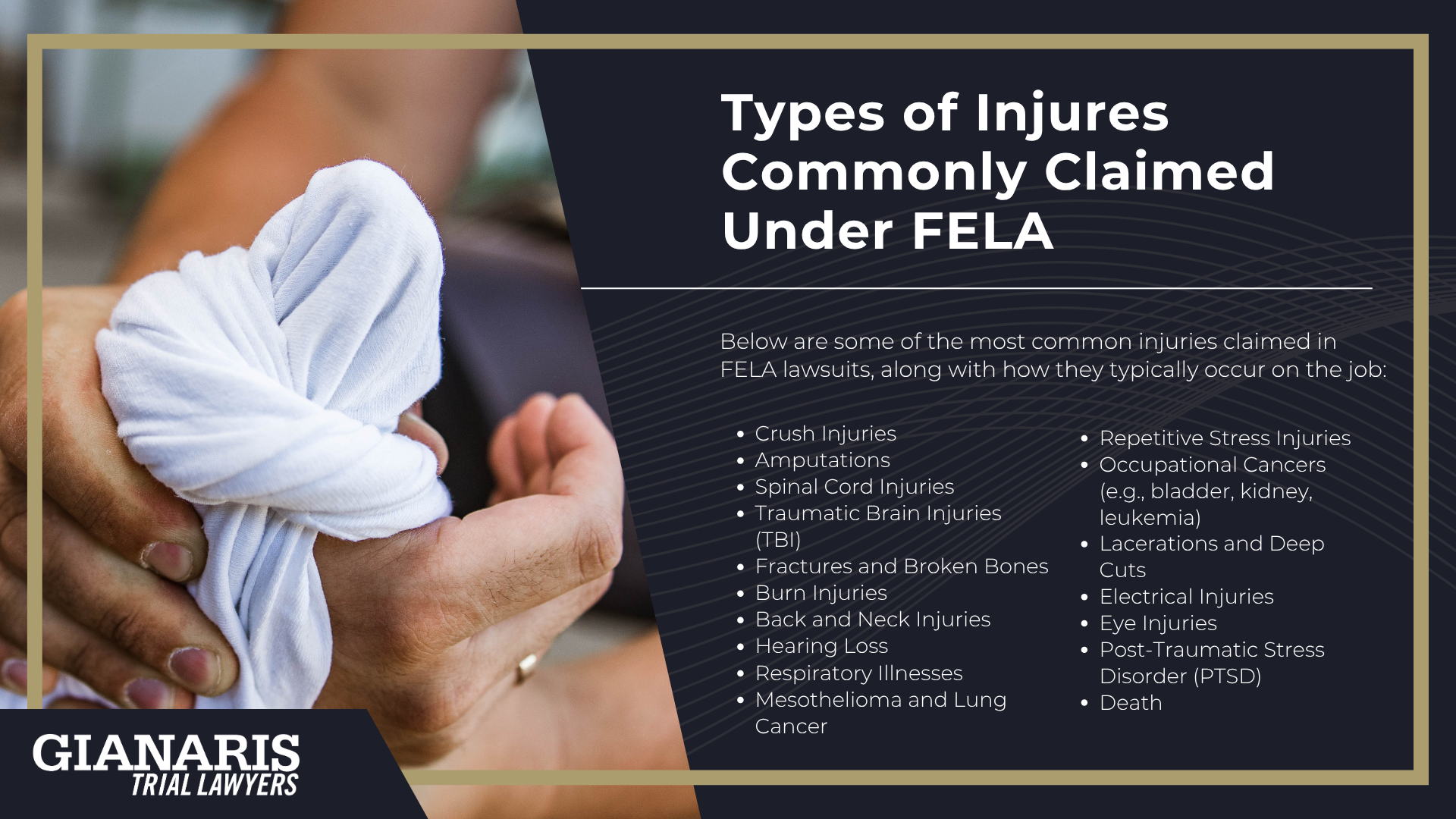
Below are some of the most common injuries claimed in FELA lawsuits, along with how they typically occur on the job:
- Crush Injuries – From being pinned between railcars or struck by moving equipment.
- Amputations – Caused by entanglement in machinery, moving parts, or sudden railcar movement.
- Spinal Cord Injuries – Resulting from high-impact falls or collisions.
- Traumatic Brain Injuries (TBI) – From being struck by falling tools, slips on slick surfaces, or equipment malfunctions.
- Fractures and Broken Bones – Due to slips, falls, or impacts with heavy rail equipment.
- Burn Injuries – From hot surfaces, electrical faults, or fuel-related accidents.
- Back and Neck Injuries – Common in workers lifting heavy tools or exposed to repetitive strain.
- Hearing Loss – Caused by long-term exposure to loud engines, horns, and shop equipment without proper protection.
- Respiratory Illnesses – From inhaling diesel exhaust, silica dust, asbestos fibers, or chemical fumes.
- Mesothelioma and Lung Cancer – Often linked to long-term asbestos or diesel exhaust exposure.
- Repetitive Stress Injuries – Affecting joints, tendons, and muscles from years of physical strain.
- Occupational Cancers (e.g., bladder, kidney, leukemia) – Resulting from toxic exposure to substances like benzene, solvents, or welding fumes.
- Lacerations and Deep Cuts – From sharp tools, sheet metal, or broken equipment.
- Electrical Injuries – Suffered by electricians or mechanics working on live systems or poorly grounded machinery.
- Eye Injuries – Caused by flying debris, welding sparks, or chemical splashes.
- Post-Traumatic Stress Disorder (PTSD) – Arising from witnessing or surviving catastrophic incidents.
- Death – In cases of fatal workplace accidents or delayed consequences of occupational disease.
These injuries can severely impact a worker’s life and ability to continue employment, making it critical to pursue all available legal remedies under FELA.
How Long Do You Have to File a FELA Claim?
Under the Federal Employers Liability Act (FELA), injured railroad workers generally have three years from the date of their injury to file a claim.
If the injury or illness was not immediately apparent—such as in cases of occupational cancer—the three-year period begins when the worker knew or reasonably should have known that the condition was related to their railroad work.

Missing this deadline can result in the claim being dismissed, regardless of its merits.
Because FELA claims involve detailed investigations and medical evidence, it’s important to contact a lawyer as soon as possible after a diagnosis or accident.
Acting quickly gives your legal team the best chance to preserve evidence, identify negligent conduct, and pursue full compensation.
Why Should You Hire a FELA Attorney for Your Claim?
Hiring a FELA attorney is crucial because these cases are complex and require proof of employer negligence—something general personal injury lawyers may not be equipped to handle.
FELA attorneys understand the federal laws that govern railroad work and know how to build strong claims using industry-specific evidence.
An experienced FELA lawyer can also accurately calculate damages and stand up to powerful railroad companies and their insurers in court.

Advantages of working with a FELA attorney include:
- In-depth knowledge of FELA and related federal statutes
- Experience handling railroad industry claims and accident investigations
- Access to expert witnesses in rail safety and occupational medicine
- Strong trial preparation focused on securing maximum compensation
- No upfront costs due to contingency-based representation
